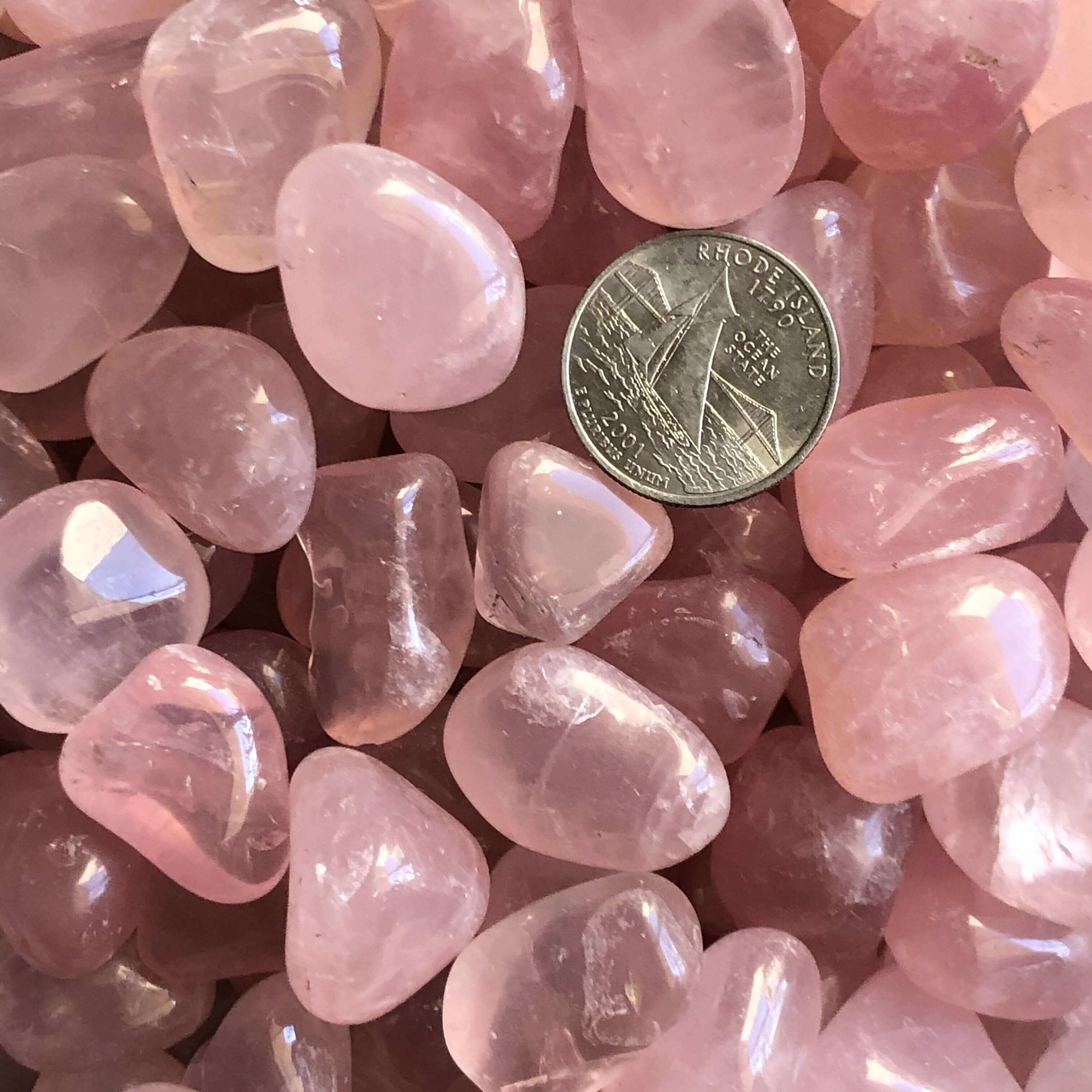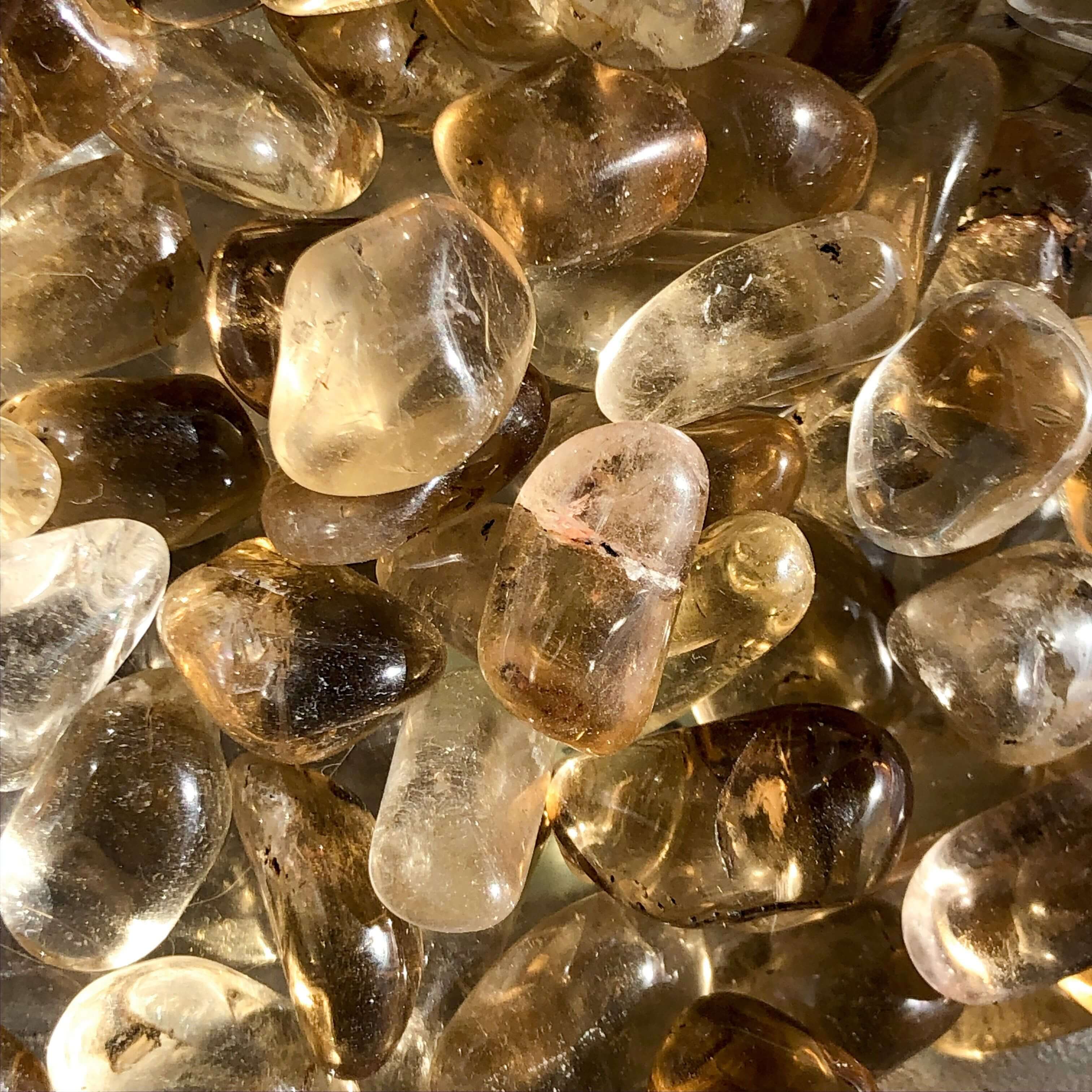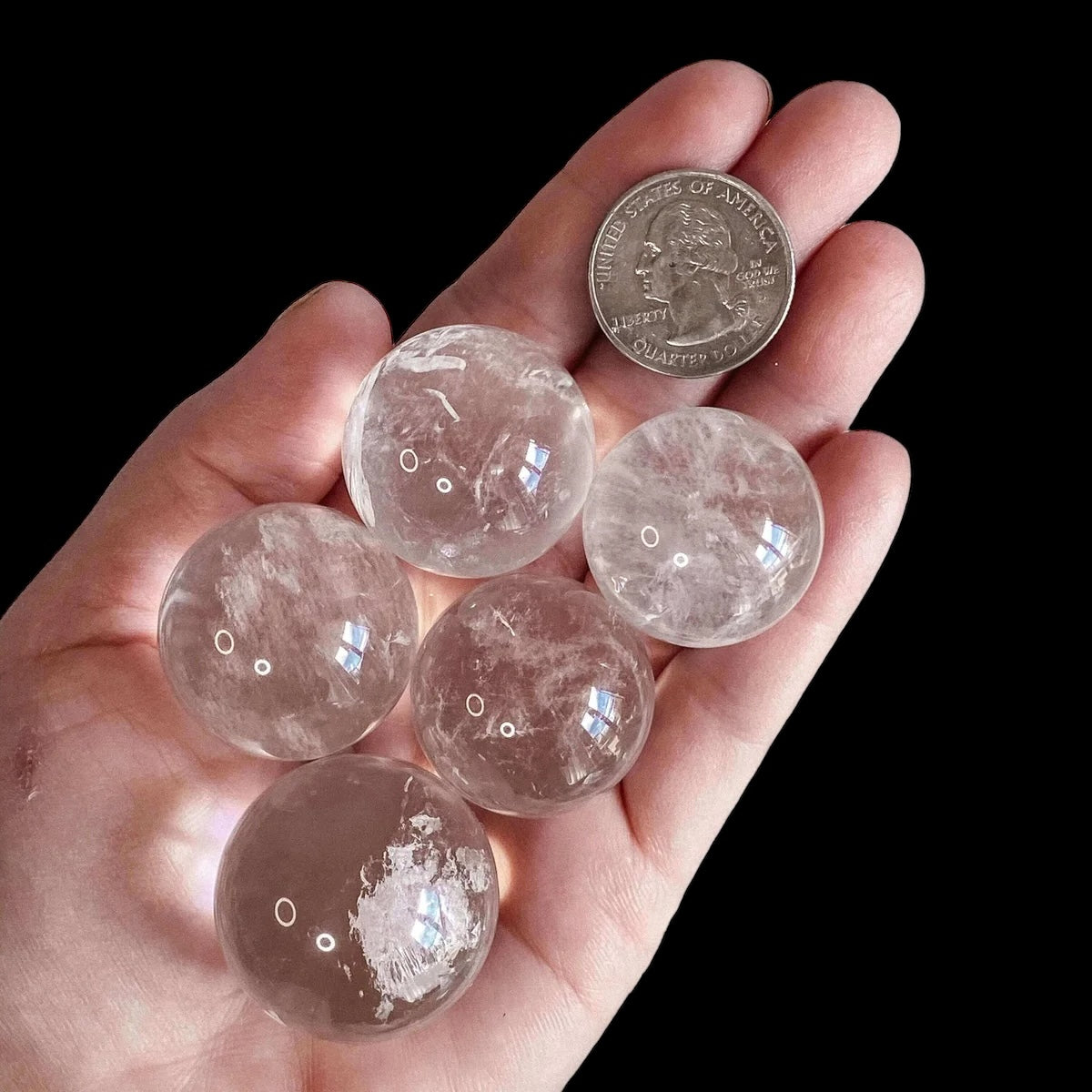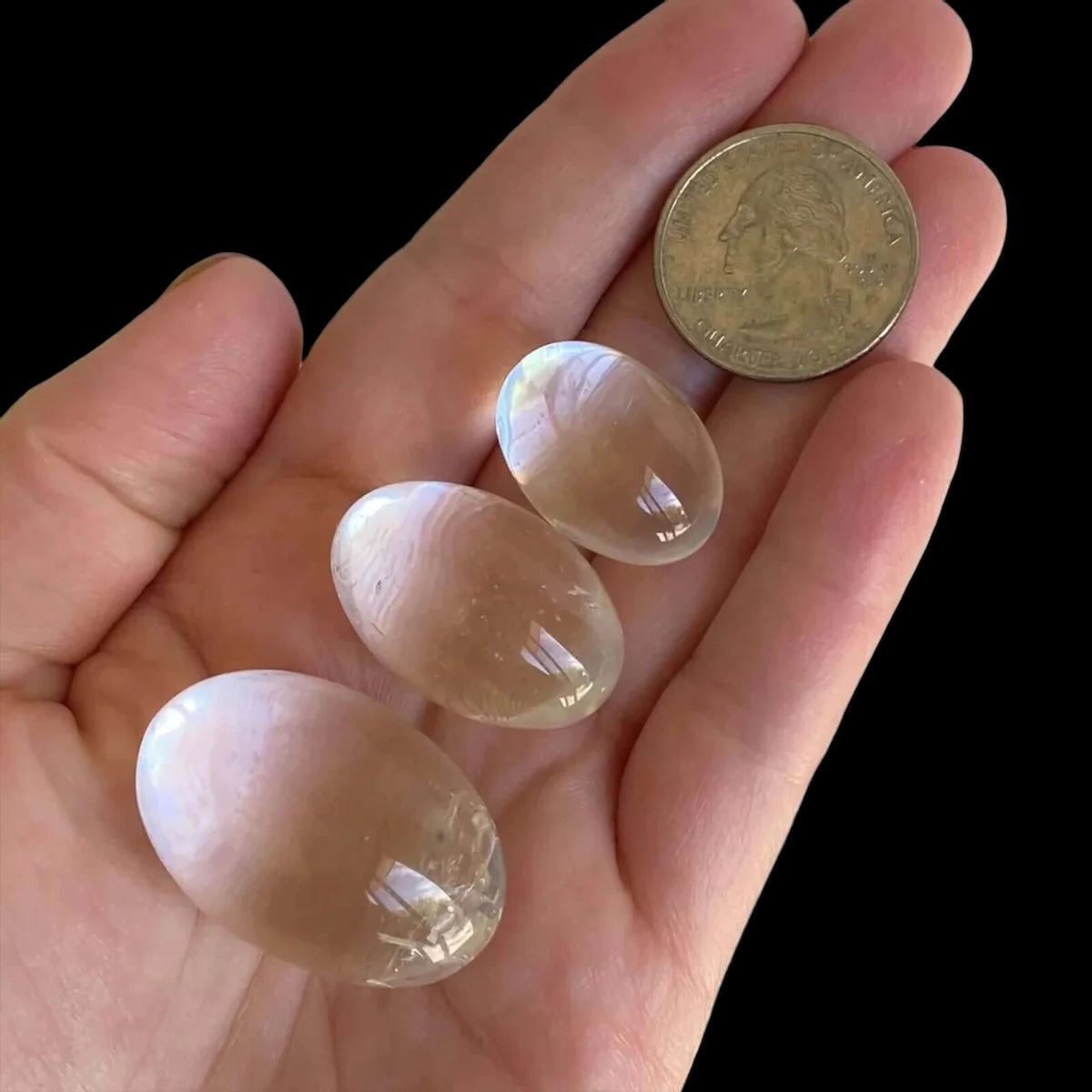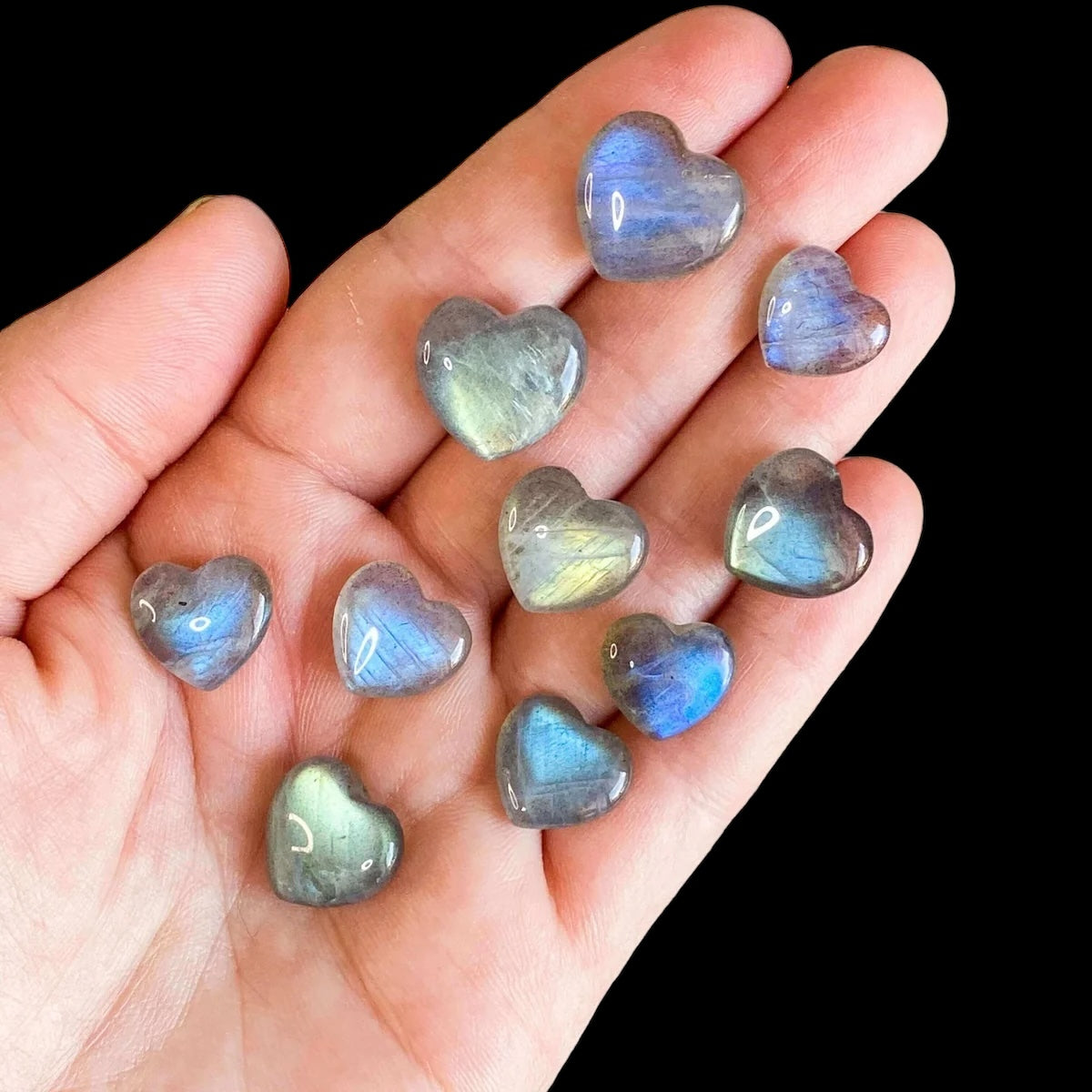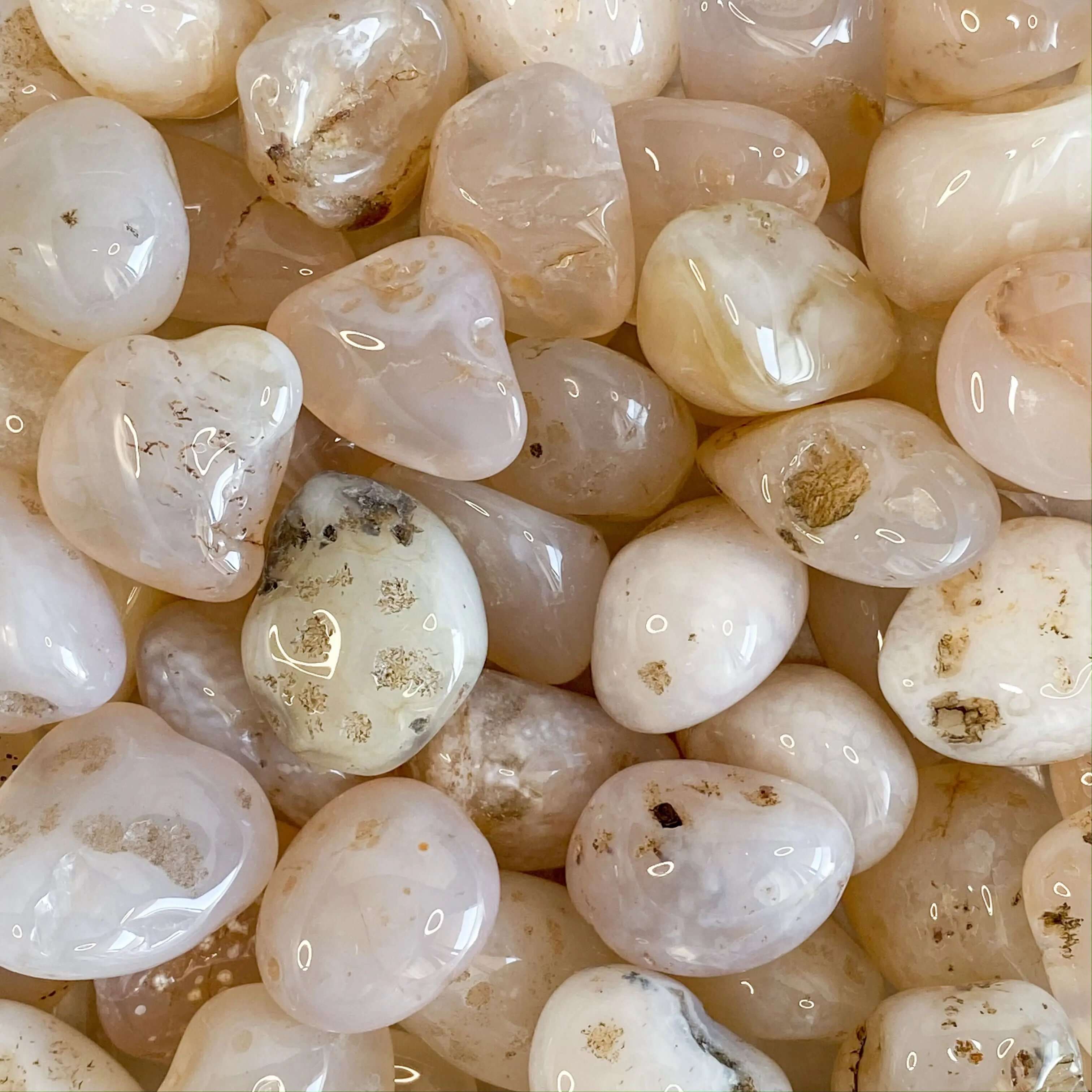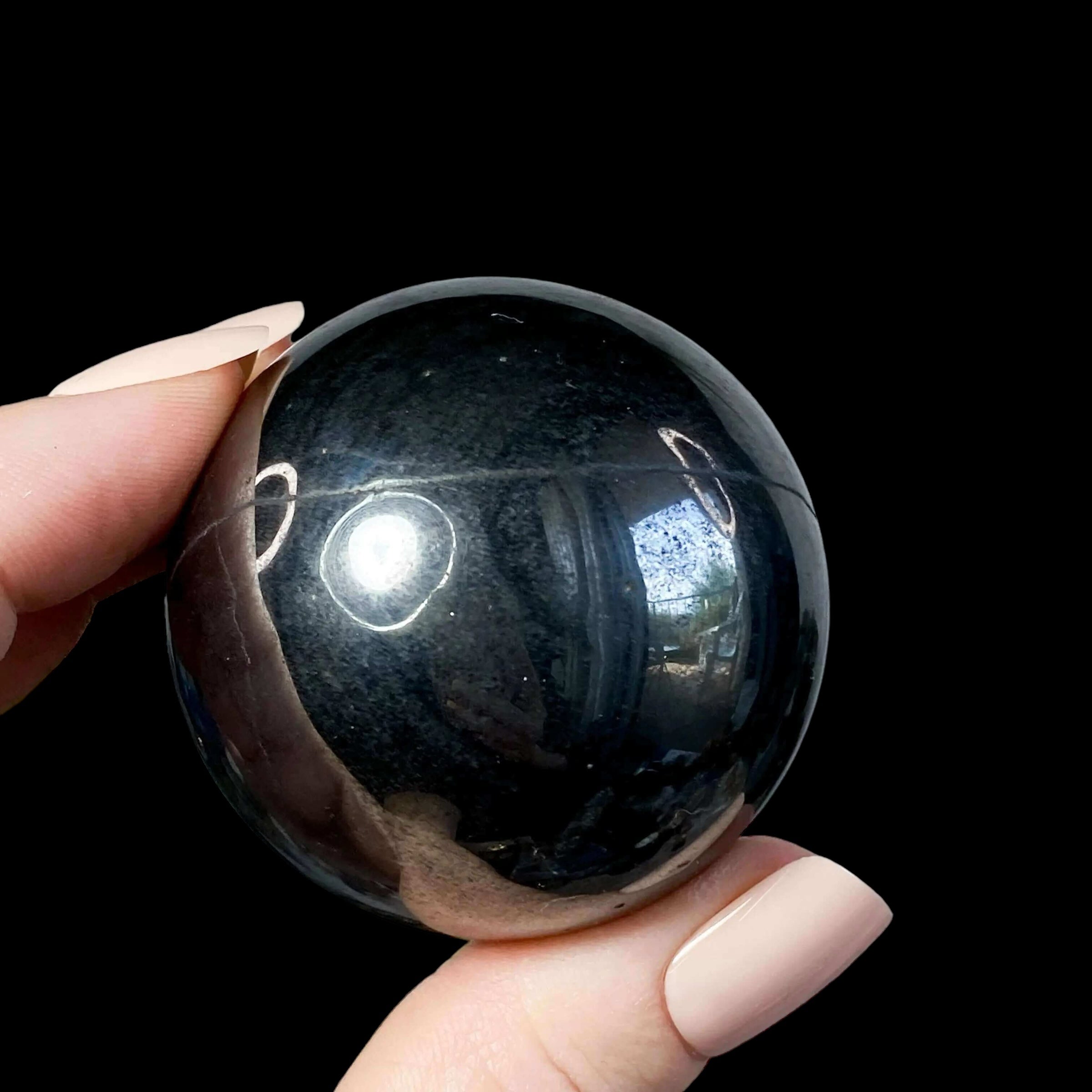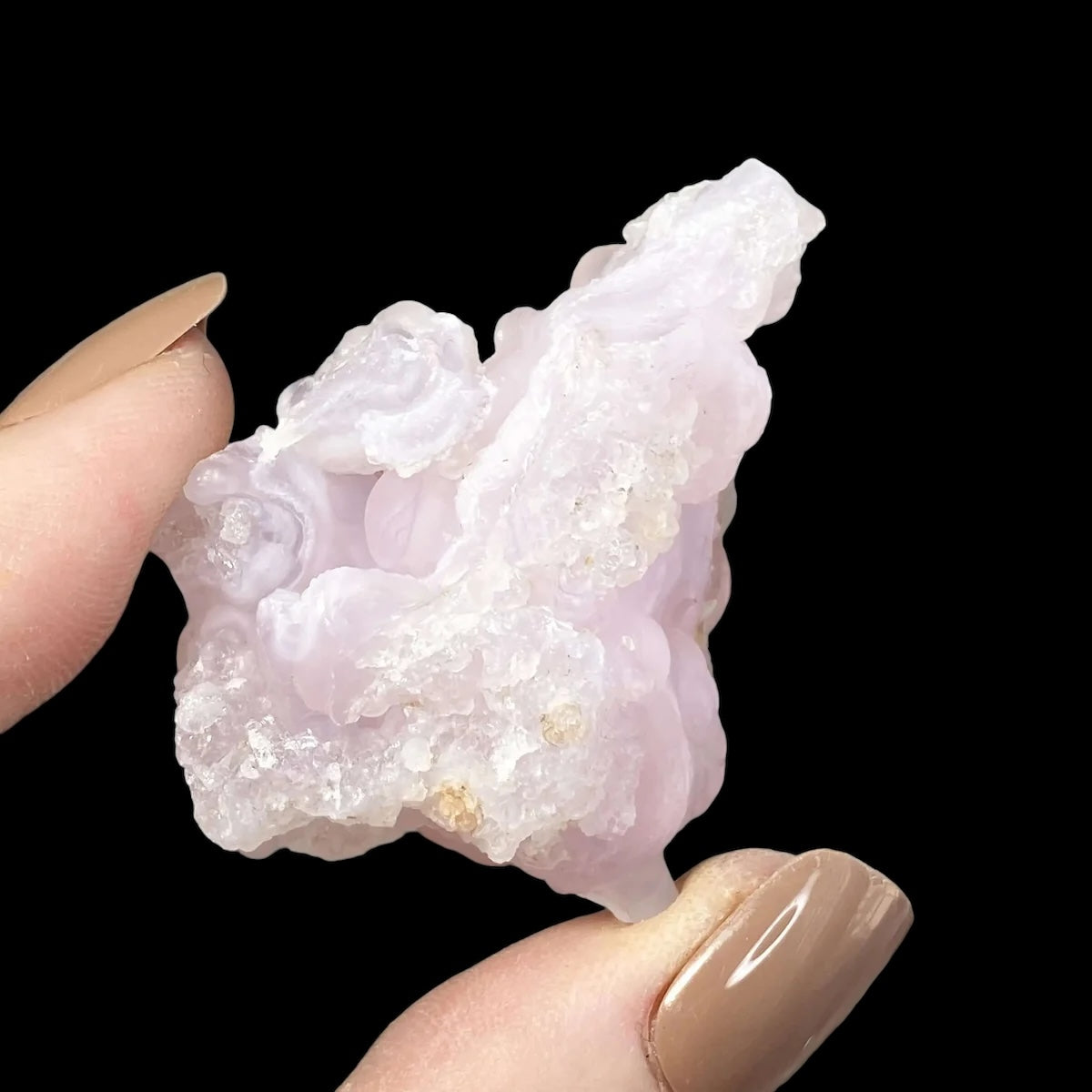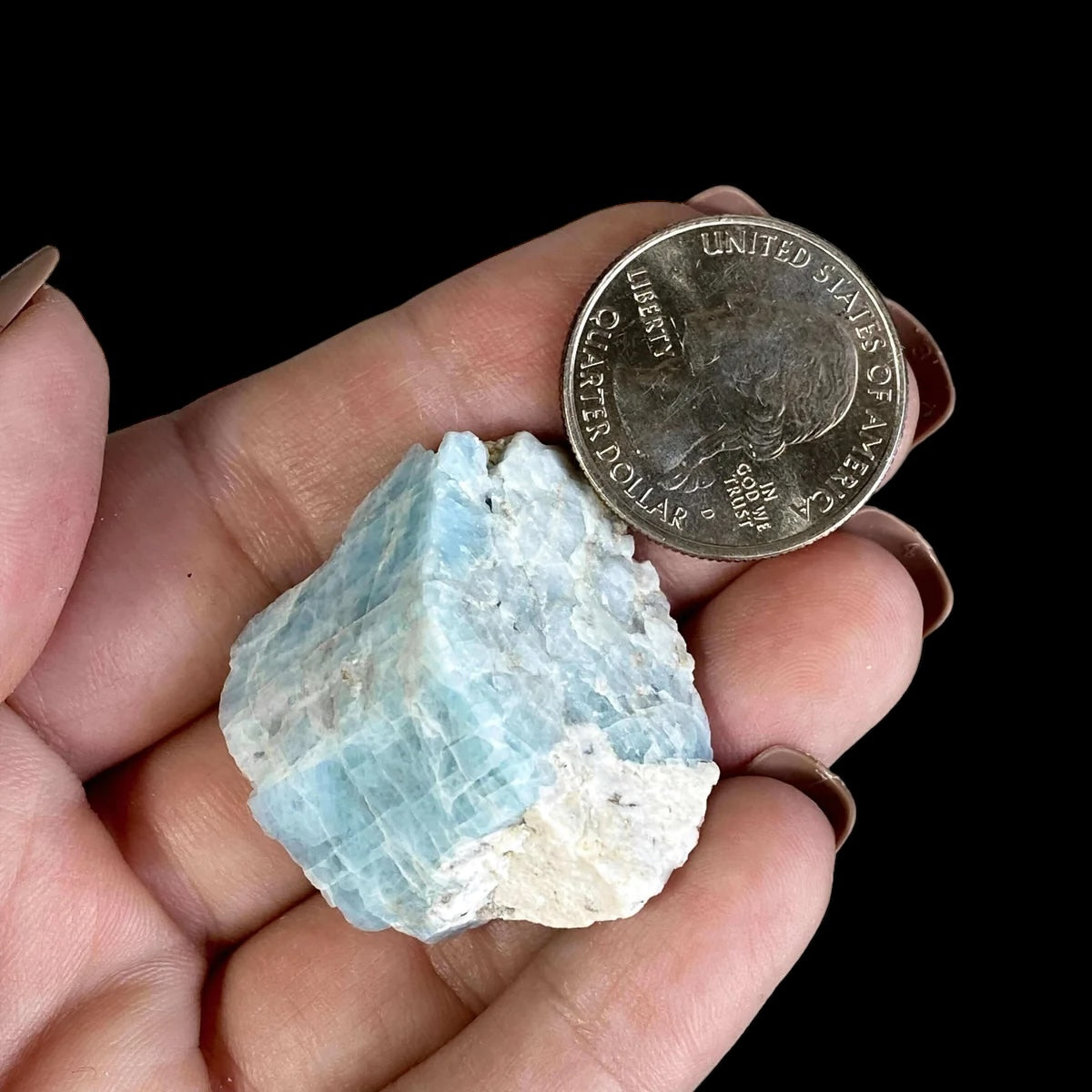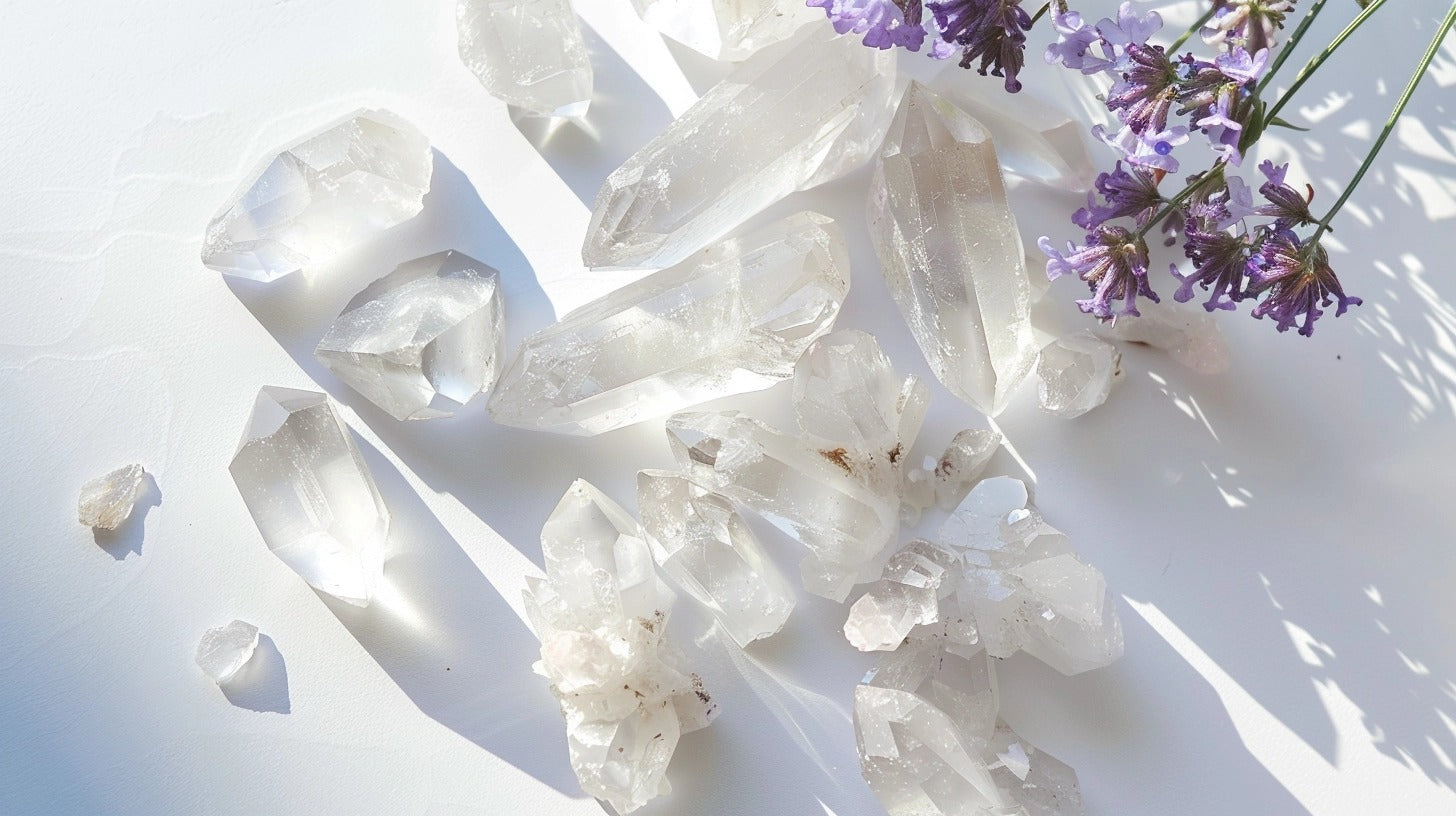
Crystal Basics: Types of Quartz Crystals Explained

Did you know there are different types of quartz?
Quartz is common and boring, right? Wrong! Let's talk about some of the varieties of quartz and what makes each one unique.
Quartz is easily recognizable as a white (opaque) or clear (translucent) crystal that is often found in clusters of points, tumbled or raw chunks, or cut into various shapes. But did you know that not all quartz is "just" quartz? Let's look at some of the different ways that quartz forms and some of the properties of each.
Quartz is common and boring, right? Wrong! Let's talk about some of the varieties of quartz and what makes each one unique.
Quartz is easily recognizable as a white (opaque) or clear (translucent) crystal that is often found in clusters of points, tumbled or raw chunks, or cut into various shapes. But did you know that not all quartz is "just" quartz? Let's look at some of the different ways that quartz forms and some of the properties of each.

Clear Quartz
Quartz is a stone that almost everyone is familiar with – whether they realize it or not! As perhaps the most abundant mineral on Earth, it’s worth paying attention to. Quartz has a long history of lore, tradition, and practical uses, including applications in electronics, robotics, glass-making, and home decor. Quartz, itself, is a colorless mineral that can be either transparent (clear/see through) or opaque (not see though).
Primarily, clear quartz is used as an amplifier – it can amplify the properties of other stones. Interestingly, this is also one of its uses in everyday life: as a way to move energy from one place to another, such as with electronics. Quartz is also easily programmable: When you set your intentions for the stone, it can help to amplify that energy, whether it be for abundance, love, or peace.
Quartz can be found in most any crystal shop, both brick-and-mortar and online. It is also easy to come across pieces that are very affordable! Of course, depending on the size, shape, and/or “grade” (quality), it may be more or less expensive. Quartz is also beautiful: its naturally-formed, clear points can be absolutely stunning - as can it's cut or shaped creations.

Amethyst
Amethyst is a variety of quartz that is purple in color. It can range from a very light, almost clear color to a deep, dark purple that looks like grape jelly. In fact, there is actually a beautiful variety of amethyst from Uruguay that is called “grape jelly amethyst” for just that reason.
Even though amethyst is a variety of quartz, it is so well-known that it almost considered to be in its own category. Amethyst is generally abundant in the market, so you can find nice chunks, clusters, geodes, points, and tumbled pieces for a reasonable price. Of course, as with many stones, there is a range of grades (levels of quality) of amethyst – and prices vary accordingly.
Amethyst is a stone associated with the crown chakra, which is located at the top of the head. As such, it is said to be a connection to spirituality and the divine, as well as helping to increase intuition. Amethyst is said to be a stone that is good for everyone – a crystal “jack of all trades,” in a way. It is said to be good for balancing the left and right hemispheres of the brain, to help one be balanced on all levels. It can also help with insomnia and bad dreams.

Rose Quartz
Rose quartz is a gorgeous, rosy, pink stone found in various locations, including Madagascar, Brazil, and the U.S. It is the pink version of quartz, created by the presence of manganese, iron, or titanium as the crystal grows. It is found in masses, as opposed to points and crystal formations, like clear quartz; however, it does occasionally (VERY occasionally) form in a small crystalline structure. These are rare and quite special to come across.
Rose quartz is a stone adored by many: It is a stone of love, compassion, and gentleness. It supports all kinds of loving relationships, including self-love, friendship, and romantic love. Rose quartz also supports the heart chakra.
Smoky Quartz
Smoky quartz is a dark greyish-brown variety of quartz and ranges from very light to very dark in color. The smoky color of this quartz is due to a process of natural irradiation that occurs within the Earth. Smoky quartz grows in both masses and points, similar to clear quartz and can be found in locales throughout the world, including Madagascar, Brazil, Africa, and the United States.
Smoky quartz is a great crystal for grounding and for calling in Earth energy. It is also a fantastic stone for clearing negativity, or absorbing negative energy. It can help with feelings of ungroundedness, emotional upset, and difficulty in communicating. Smoky quartz is also said to provide psychic protection as well as ward off bad dreams.
Citrine
Citrine is the stone of abundance, manifestation, creativity, and strong 3rd chakra/solar plexus energy. It is warming, sunny, and uplifting. Citrine is also a variety of quartz - this time, one that reflects the yellow to yellow-orange light spectrum.
Natural citrine is relatively difficult to find, both in nature and on the market. Most of the natural citrine discovered today comes from Brazil. You can also find natural citrine from Africa. Natural citrine grows in both masses and in cluster/point formations.
Much of the citrine found on the market is "treated" citrine, which is actually amethyst that has been heated at high temperatures, until the crystals turn an orangey-yellow. In fact, the image above is of treated citrine (heated amethyst). Amethyst is an abundant mineral - and by heating it to produce citrine, sellers and shops are able to offer it at affordable pieces.
Rest assured, however, that transformed citrine IS still considered to be citrine (and not amethyst) for all intents and purposes by many, if not most, people – including crystal and metaphysical experts. The process of heating does not change the actual structure of the crystal; what does change is the color – or the light frequency that it gives off - so you now have a stone that vibrates on the yellow-orange color spectrum, instead of on the purple/violet spectrum. Therefore, all of the things that are associated with that color spectrum (the solar plexus; abundance; warmth) are now associated with the (newly-yellow) crystal.
Bonus: Rutilated Quartz
Rutilated quartz is characterized by "threads" or "needles" (called rutile) that run through it. These threads can be golden in color, like in the picture above; silver-colored; black; or red. The rutile growing inside of these quartz crystals can be thin or sparse and can grow all in the same director or in multiple directions. When the rutile forms in a "spray," reaching out in all directions, this is referred to as a rutile "star."
Rutilated quartz is said to stabilize, clarify, and energize. It is most commonly found in clear quartz - strengthening the commonly-noted amplification properties of the quartz even more. Rutile can also be found in smoky quartz.
Love this? Pin it!




















